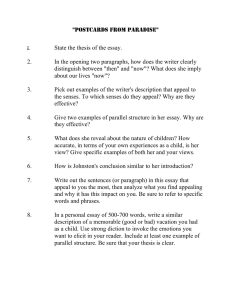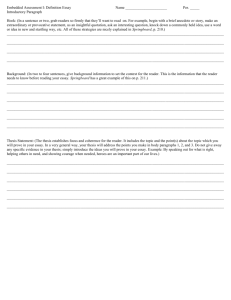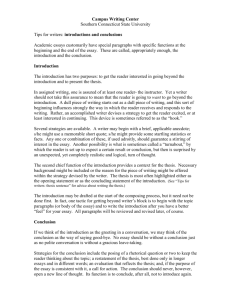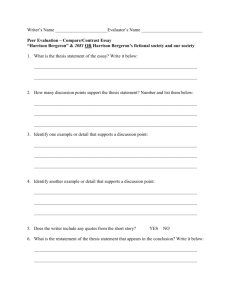ENGLISH FAQ’s
advertisement
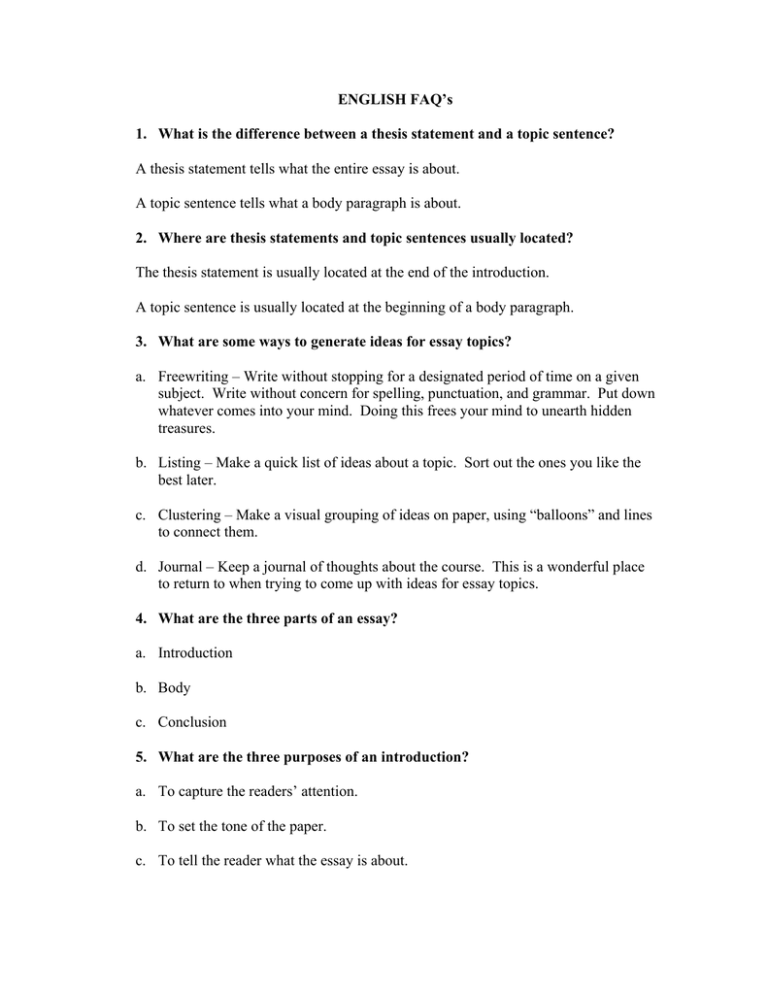
ENGLISH FAQ’s 1. What is the difference between a thesis statement and a topic sentence? A thesis statement tells what the entire essay is about. A topic sentence tells what a body paragraph is about. 2. Where are thesis statements and topic sentences usually located? The thesis statement is usually located at the end of the introduction. A topic sentence is usually located at the beginning of a body paragraph. 3. What are some ways to generate ideas for essay topics? a. Freewriting – Write without stopping for a designated period of time on a given subject. Write without concern for spelling, punctuation, and grammar. Put down whatever comes into your mind. Doing this frees your mind to unearth hidden treasures. b. Listing – Make a quick list of ideas about a topic. Sort out the ones you like the best later. c. Clustering – Make a visual grouping of ideas on paper, using “balloons” and lines to connect them. d. Journal – Keep a journal of thoughts about the course. This is a wonderful place to return to when trying to come up with ideas for essay topics. 4. What are the three parts of an essay? a. Introduction b. Body c. Conclusion 5. What are the three purposes of an introduction? a. To capture the readers’ attention. b. To set the tone of the paper. c. To tell the reader what the essay is about. 2. 6. What are the two most important writing traits? a. Content – The ideas that the writer is trying to get across to the reader. b. Organization – The structure in which the writer’s ideas are presented. 7. What are the two most expressive writing traits? a. Voice – When the writer sounds like him or herself, rather than a machine. b. Word Choice – The writer’s use of specific vocabulary. 8. What are two writing traits that make a paper presentable and easy to read? a. Sentence Fluency – The way a writer constructs sentences and uses transitions. b. Conventions – The way the writer spells, punctuates, and uses grammar. 9. What are some ways to develop paragraphs? a. By telling anecdotes (stories). b. By using description. c. By giving details. d. By using examples. e. By providing facts and figures. 10. What are the two purposes of a conclusion? a. To remind the reader what the essay was about. b. To leave the reader with something to reflect upon. Revised 3/07



